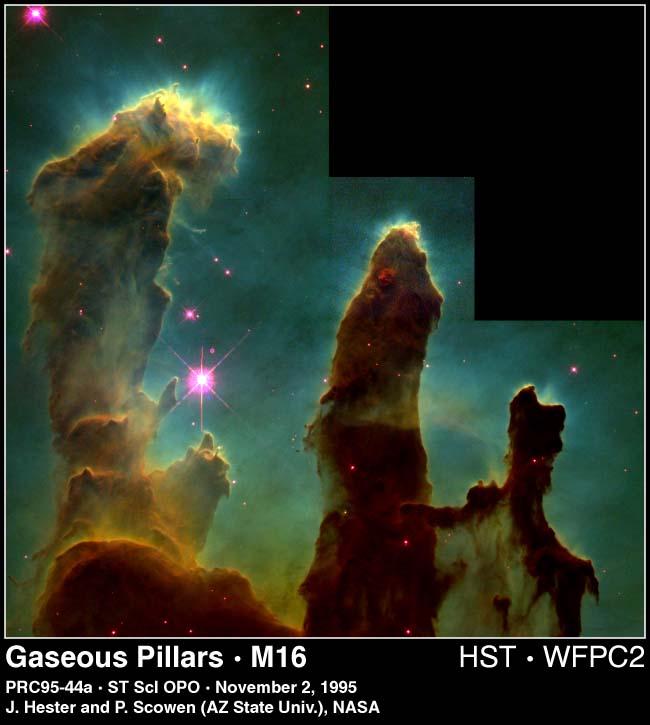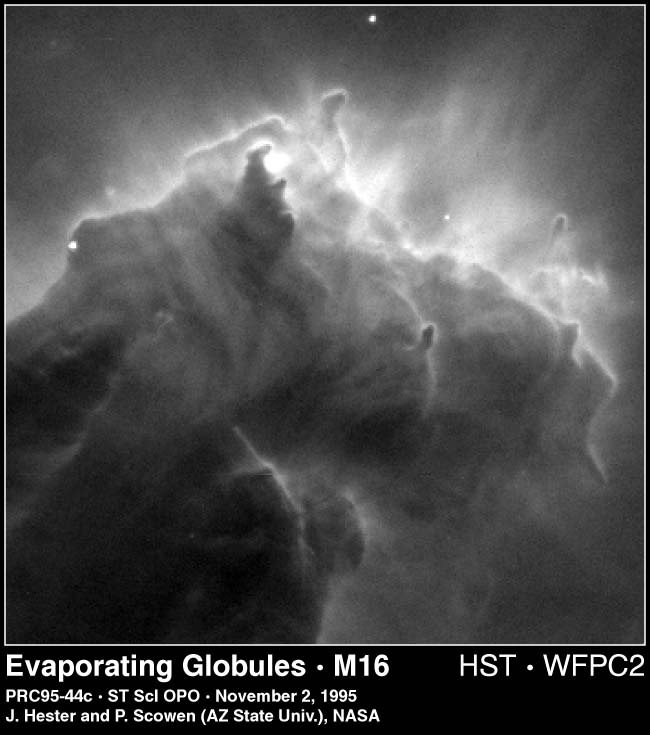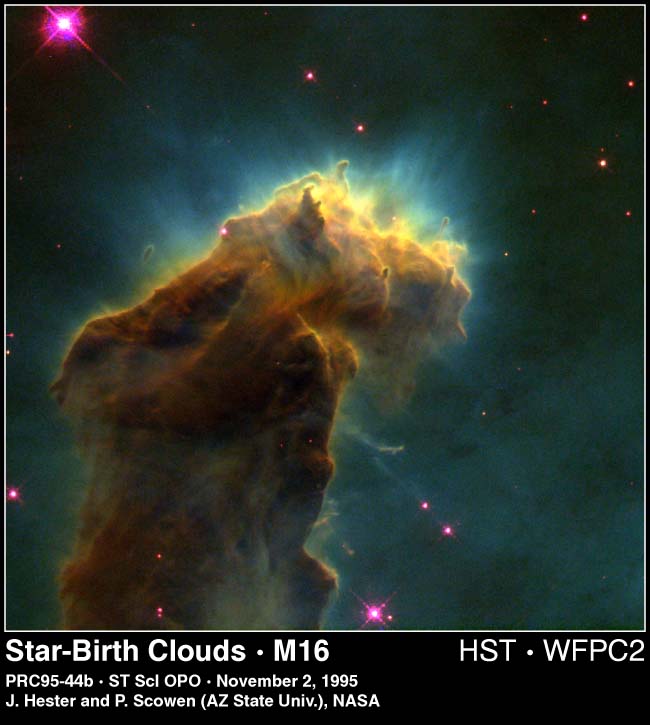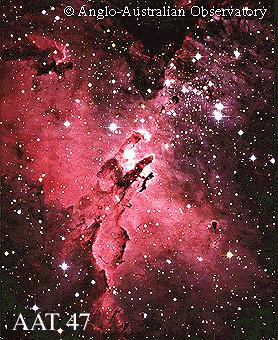
The picture colors are not real. We create these from several data sources (X-Ray, Gamma, Light...)
To be able to see such objects we always need to use specific filters on the telescope. Hubble will have all the following filters:
The filters can suppress certain light waves, duplicate images, reduce strong lights... Thus it enables anstronomers to looks at many objects we can't see with our eyes.
That's also one more proof that space is not empty as we first thought. It's filled with particules all over. Including photons (light) and gravitons (the attraction between objects.)
The movement of the particules can give us a better idea of what happened one day in our own solar system. The pilar is composed of gas and dust. The gas the most present in the cloud is hydrogen (the simplest molecular particule.) The fast movements of the gas on the border of the cloud is due to stars moving out of the cloud.

We also make many observations of this cloud because it gives us many answers on stars birth.
When there is formation of a dusty area within the cloud (dusty means heavier than the average weight of the cloud) then a star is born. The star will get out of the cloud, already shining. On its way it will take more energy from the gas in the cloud.
The "dust" here is an heavier particule which will transform other hydrogene particules from the cloud to become heavier has well. The first appeared because of the high pressure present within the cloud. Then heavier particules slowly starts to spin and generates a hole in the cloud, because they all "stick" to each other (collapsing in the center of their group.) The heavier formation then starts to turn around itself, generating the gravitation of the star.
 A picture of M16 as seen from Earth, in Australia.
A picture of M16 as seen from Earth, in Australia.
(The picture was taken with the Anglo-Australian Telescope)
Most of the stars in the cluster can be seen offset just above and to the right of the photograph's center. This type of star cluster is called an "open" or "galactic" cluster and typically has a few hundred young bright members. The redness of the surrounding emission nebula gas is caused by electrons recombining with hydrogen nuclei, while the dark regions are dust lanes that absorb much of the radiation that enters it. The dust absorbs so much light it allows astronomers to determine which stars are inside the nebula and which are in the foreground.

